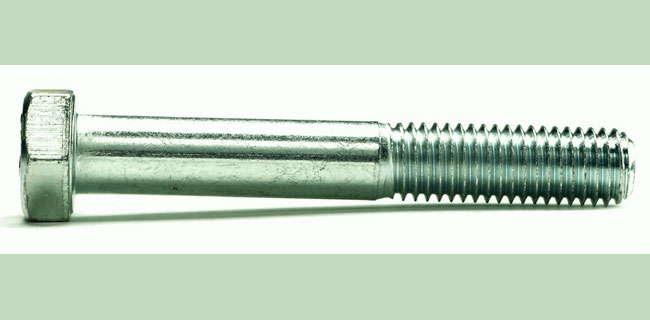Don’t think bolts are high-tech? Think again. Fasteners like bolts have been an essential part of mechanical engineering for thousands of years and have evolved to meet today’s high-performance demands. In fact, there are so many options to choose from, selecting the right bolt for your needs can be challenging.
Superior Industrial Supply has a huge inventory of bolts from leading brands like Lake Erie Screw Corp., Nucor Fastener, Brighton-Best, Lindstrom Metric, Stanley Black & Decker, Auveco, Chicago Hardware and others. Our selection includes:
- Hex head cap screws
- Tap bolts
- Flange bolts
- Carriage bolts
- Shaker screen bolts
- Plow bolts
- Elevator bolts
- Bucket tooth bolts
- 12-point bolts
- Eye bolts
- U bolts
- J bolts
- Stack bolts
- T-slot bolts
- Square head bolts
- Structural bolts
Operators usually know exactly what they’re looking for when it comes to fastener selection. Often, they simply need to replace a worn or broken part. Other times, the sheer number of bolt options can make choosing a bolt a bit more complicated. That’s why we created a simplified guide to basic bolt selection.
Contact us today to discuss your needs or to schedule an onsite consultation at 314-638-6500 option 4.
Understanding and Identifying Bolt Grade and Class
You can tell a lot about a bolt just by looking at the head. To learn if a bolt is an American (English or Imperial) bolt or a metric bolt, look for markings on the bolt head. With American bolts, there should be radial markings to help you determine the grade, or strength class, of the bolt.
US Bolts (English/Imperial) Grade Identification
Look for the number of radial markings on the bolt head, then add 2. For example, a Grade 5 bolt has 3 radial markings on the head. A Grade 8 bolt has 6 radial markings, while a Grade 2 bolt will have no radial markings. Here are some examples from Nucor Fastener:
Grade 2- Low or medium carbon steel
Grade 5- Medium carbon steel, quenched and tempered
Grade 8- Medium carbon alloy steel, quenched and tempered

Metric bolts, on the other hand, should have a class number on the head.
Metric Bolt Class Identification
Class 8.8- Medium carbon steel, quenched and tempered
Class 10.9- Alloy steel, quenched and tempered
Class 12.9- Alloy steel, quenched and tempered

For additional guidance on bolt selection, download this Free Technical Guide from Brighton Best.
Common Challenges when Measuring Bolt Length
Identifying bolt grades and classes is pretty straight forward. There is one particularly challenging aspect of bolt selection and that is measuring the bolt length. People often struggle with how to measure bolt length on various bolt heads. On a hex head, you should measure under the head to the end of the bolt. On a countersunk head or a tapered head, you should measure the overall length. Most mistakes are made when measuring countersunk bolts. Many mistakenly measure from under the head to the bolt end, not accounting for the countersink depth. This results in the bolt being too short.
How to Measure Thread Pitch
This is where it can become tricky. While American or English bolt measurement is relatively straightforward; you simply measure the number of threads per inch. It’s as easy as using a ruler to measure the bolt. How many threads you have within one inch will tell you if you have a coarse thread or a fine thread bolt.
On the metric side, it’s measured differently. It’s actually called thread pitch and is measured in millimeters (mm) from one thread to the next thread. Rather than a standard ruler, you would need a millimeter gauge to measure that distance. For example, a thread pitch of 2.5 mm means that the distance between one thread and the next is 2.5 mm. A good rule of thumb is that smaller fasteners have a finer thread and therefore a lower thread pitch. Larger bolts may have threads that are further apart in distance, therefore having a higher thread pitch.
The Importance of Accurately Measuring Bolt Diameter
When selecting bolts based on their diameter, it’s critical that the right measurements are taken. To the untrained eye, it may seem a relatively simple concept. But since there are several different locations on the bolt where someone could take a measurement, the likelihood for choosing the wrong bolt diameter increases. The most common measurement for bolt selection is almost always the Thread Diameter.
There are three common diameters on a bolt:
- Thread Diameter (T) Measures the distance from the outer thread on one side to the outer thread on the other side.
- Shank Diameter (S) Measures the diameter directly under the bolt head.
- Root Diameter (R) Measures the distance from the bottom cavity of the threads from one side to the other side.

Learn more about Superior Industrial Supply products and services.
You don’t have time to wait and the last thing your business needs is unnecessary downtime because you can’t locate a part. Superior Industrial Supply carries the largest selection of longer length bolts to meet a variety of your industrial needs. In fact, unlike other supply stores, we carry up to a 2-inch diameter and 15-inch long bolt in stock. Ready when you need it.
Stop into our St. Louis location, or call 800-783-6501 and we’ll get you squared away today.

